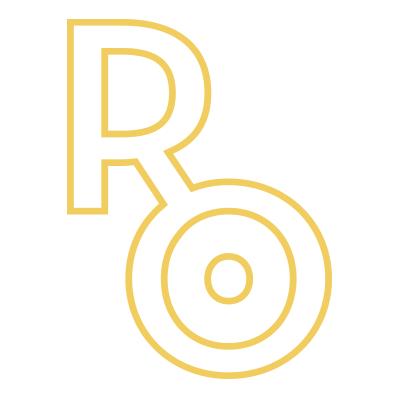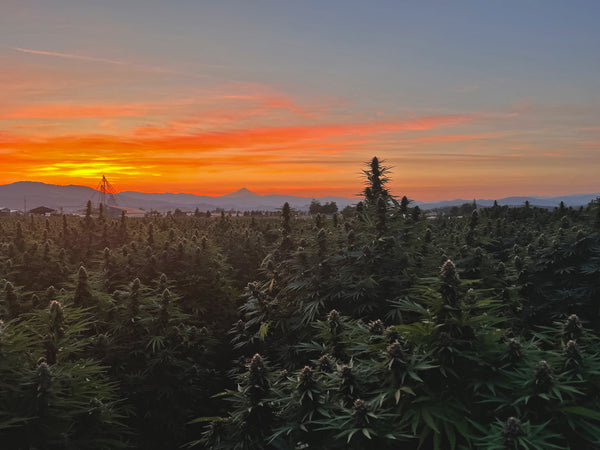
Top 7 Cannabinoids and What You Need to Know
Even with the many recent victories legalizing cannabis and hemp flower in various US states, there’s still a lot we don’t know about how it works. While originally, many people focused on CBD and THC, there is a huge list of cannabinoids with over 100 compounds that may have potential benefits for the human mind and body.
If you’re curious about the most common cannabinoids, it’s time to follow along as we break down the top seven. Learn more about these types of cannabinoids, as well as the original two (THC and CBD), at Rogue Origin today.
What Is a Cannabinoid?
Before we dive into our list of cannabinoids, it’s important to understand what they actually are. A cannabinoid is a chemical compound that can interact with the CB receptors in the endocannabinoid system of the body. Scientists discovered the first cannabinoid receptor over 40 years ago, establishing that cannabis interacted with the now-named CB1, CB2, and GPR55 receptors to produce various behavioral and physiological effects.
1. THC (Tetrahydrocannabinol)
At this point, most people know about THC because it’s the main type of cannabinoid responsible for getting high. It’s one of the strongest psychoactive components in marijuana. It connects to the CB1 receptor in the brain to release dopamine and create euphoric feelings. While you might feel great, the side effects of THC include reduced concentration, sensory perception, and control over movement.
However, THC can do so much more! Studies from 2019 show that THC can reduce chronic pain because it has over 20 times the anti-inflammatory strength of over-the-counter painkillers like aspirin.
2. CBD (Cannabidiol)
Next on our list of cannabinoids is the second-most well-known compound: CBD. It’s non-psychoactive which means it doesn’t get you high. CBD doesn’t directly interact with the body’s CB1 receptors, which is what creates those intoxicating effects. Instead, CBD increases the level of endocannabinoids in your body, including anandamide and 2-AG. The combination of higher levels of these compounds is what helps with pain regulation and relaxation.
CBD can also counteract THC’s side effects, preventing it from impacting the formation of new memories.
3. CBG (Cannabigerol)
The next most important type of cannabinoid is called CBG. It’s considered so crucial to research because it’s actually the parent chemical for both CBD and THC, making it an essential building block for all cannabinoids. It might be one of the most important on this list of cannabinoids!
Most marijuana contains less than 1% of CBG, but it’s essential to producing any medicinal effects. Studies show that CBG has neuroprotective properties, which may slow degenerative diseases like Alzheimer’s and Huntington’s.
4. CBN (Cannabinol)
This type of cannabinoid is dependent on others as well. CBN, discovered in the 1930s, is created when THC degrades due to age or light exposure. When you take CBN, you’ll likely experience sedative effects, which make it easier to relax. Some studies show that just 5mg of CBN is more effective than 10mg of Valium. It can also be combined with THC to decrease chronic pain.

5. Delta-8 THC
Found in both the cannabis plant and hemp flower plant, Delta-8 is an analog of Delta-9 (THC). Because it binds to the G-protein coupled CB1 receptor in the central nervous system, scientists have shown that it has analgesic and neuroprotective capabilities and may help people who struggle with chronic pain. It’s also on this list of cannabinoids because it may support people with emotional concerns, including depression, anxiety, and stress.
There is a major difference between Delta-8 THC and Delta-9 THC, as Delta-8 has far lower psychotropic potency with minimal psychoactive effects.
6. THCV (Tetrahydrocannabivarin)
Next on our list of cannabinoids is THCV, another cannabinoid similar to THC. Like many other cannabinoids, THCV has dose-dependent effects and can bind to CB1 as well as CB2 receptors. Research shows that when taken in lower doses, THCV can be used to control appetite and glycemic levels in diabetics.
If you decide you want to take higher doses of THCV, you can expect to experience a short clear-headed high with an energetic finish. THCV is not considered a Schedule I drug on its own, but it is an analog of THC, so it shares its status.
7. CBDA (Cannabidiolic Acid)
The final item on our list of cannabinoids is CBDA, an acid that’s a precursor to CBD. You’ll find CBDA in any raw hemp flower or marijuana, but it becomes CBD when decarboxylated. While it’s considered non-intoxicating, CBDA still interacts with your body by activating the 5-HT1A serotonin receptors to affect mood, anxiety, and sleep. Generally, it has positive effects because it increases serotonin levels, and many scientists are researching it for use as an antidepressant.
The Right Cannabinoids for You

While this list of cannabinoids is by no means exhaustive, it does contain some of the most important and popular cannabinoids being researched today. These are also the cannabinoids you can expect to be listed on the ingredients of your cannabis and hemp flower products, so it’s important to know what to anticipate when you use strains or cultivars that feature them.
Even though research has barely scratched the surface of the benefits and effects of marijuana and hemp flower cannabinoids, we already have resources that show their promise in healthcare. There are still hundreds of components that may hold even more potential, and as restrictions on cannabis use and research loosen, we hope to learn much more in the years to come. For now, use this list of cannabinoids as your guide when purchasing products for private use.








